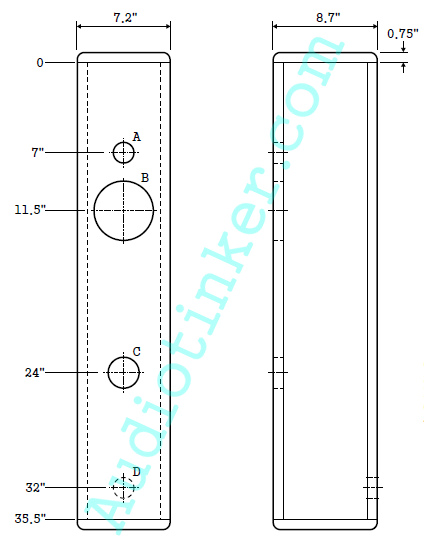WARNING
Tube amplifiers operate at high voltages which may cause property damage, serious injury or death. Proceed at your own risk. The content on this website is intended for informational purpose only.
2W Electric Guitar Amplifier
I designed this 2W electric guitar amplifier to have handy so I could practice guitar at a whim. I wanted to build it as a head for storage reasons, and to have the option to swap speaker cabs if I so desire.
Many commercial chassis options are pretty lame looking in my opinion. I wanted a rugged "industrial chic" look and decided die-cast aluminum electronics boxes would probably work out nicely. With a rough idea, I went ahead and put together some design goals...
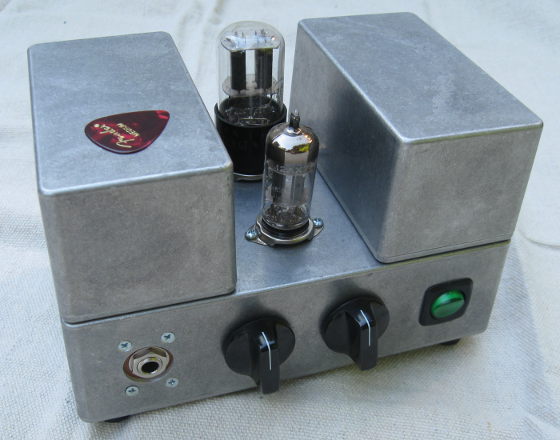 The finished 2W electric guitar amplifier. Notice the guitar pick for size comparison.
The finished 2W electric guitar amplifier. Notice the guitar pick for size comparison.Design Goals for 2W Electric Guitar Amplifier
- Similar circuit as Fender Tweed Princeton
- 12AX7 Input Tube
- 12L8GT Output Tube for low output => smaller transformers => smaller amp
- Full wave diode rectifier bridge
- Single Ended Class A
- Single input, volume, tone and power switch on front
- Quiet (High Signal-to-Noise Ratio)
- Built Point-to-Point
- IEC connector w/ fuse drawer and output on back For power entry
- Built as a head
- Diecast boxes for chassis
- Diecast boxes also as covers for the open-frame transformers
- As compact as possible
- Inexpensive to build
Schematic
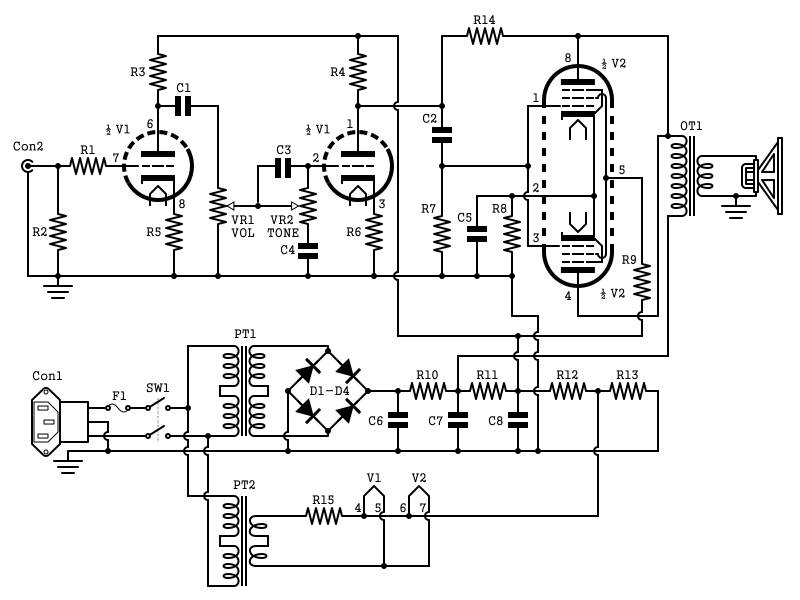 2W Guitar Tube Amp Schematic
2W Guitar Tube Amp SchematicI have a PDF file with schematic and download available. The file also contain a bill of material (BOM) and can be downloaded here: Electric guitar amplifier schematic.
Circuit
For a more technical explanation of the circuit, see 2W Tube Guitar Amp Schematic.
The challenges
A high signal-to-noise ratio is important when playing at low levels. I wanted to use this amp at night when the younger member of the family may be sleeping, and therefore need low noise at a really low volume. Most commercial amps just won't cut it as they are simply too loud or too noisy, or both.
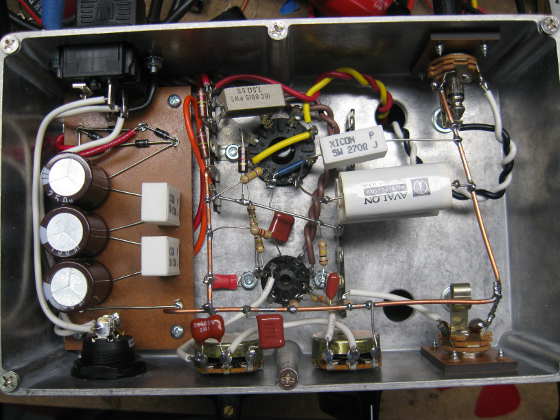 Here is a picture inside the chassis. The power supply to the left, tubes in the middle.
Here is a picture inside the chassis. The power supply to the left, tubes in the middle.The circuit is simple, so the building this amp in a "normal" size enclosure wouldn't have posed much of a problem. However, Shoehorning it into a box 7 1/4 x 4 1/2 x 2 1/4 inches turned out to be tricky.
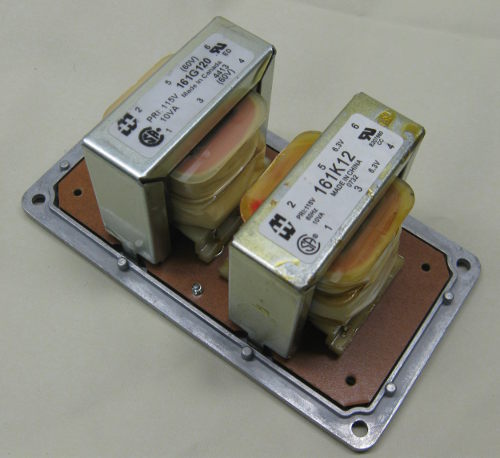 Here are the two power transformers. High voltage to the left and 12.6VAC for the heaters to the right.
Here are the two power transformers. High voltage to the left and 12.6VAC for the heaters to the right.To save cost, I decided to use inexpensive circuit-board mounted transformers and mount them to 1/8" phenolic board. The connection points have eyelets staked to the board. Boards built this way can withstand a nuclear disaster.
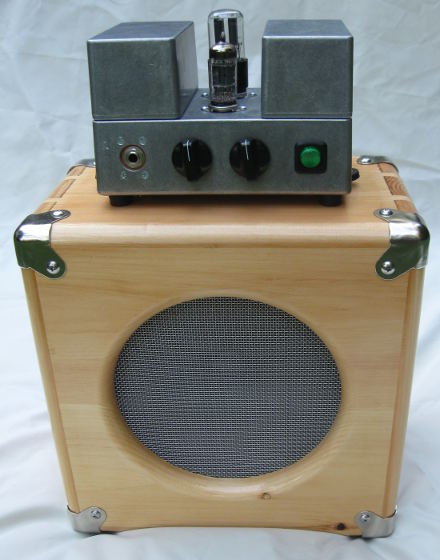 Finished amp on top of a speaker cab.
Finished amp on top of a speaker cab.Conclusions
It has turned out to be an awesome little amp. I hit all of my design targets. It has a nice bluesy growl when over-driven. In fact, it was a little too prone to overdrive, so I added some local negative feedback. It did the trick. Now it stays clean to about 12 o'clock.
There is no audible hum when no instrument is plugged in. I mean nada, zero...It blew my mind. The reason, I believe, is due to the encased transformers and an old trick to elevate the relative DC voltage level of the heaters to about 1/2 of B+. This is something I will always do from now on.
The few downsides are pretty minor. For instance, it's a little awkward to transport as it doesn't have a handle. It's small enough to easily get a grip of the chassis though, and it's light as a feather for a tube amp. I also found the tone control somewhat limiting. The upside is that I practice playing more, rather than fiddling with knobs. See, there is an upside to everything.
A very exciting little guitar amp for sure!
Recent Articles
-
Speaker Plans
Feb 04, 18 05:23 PM
Speaker plans for download - free pdfs for DIY builders and tire kickers
